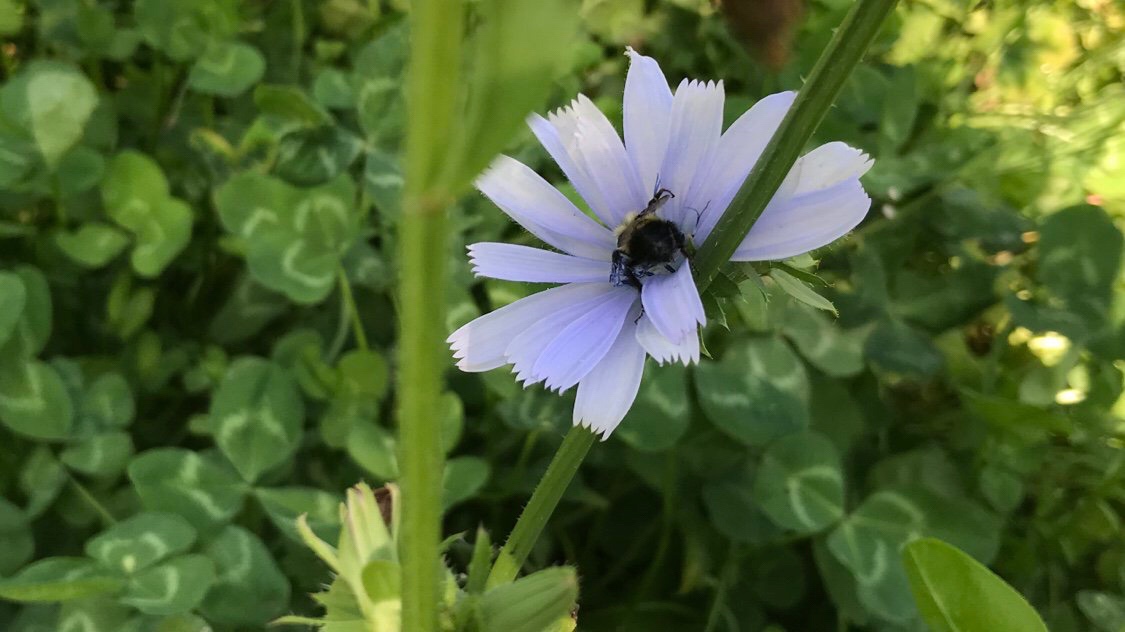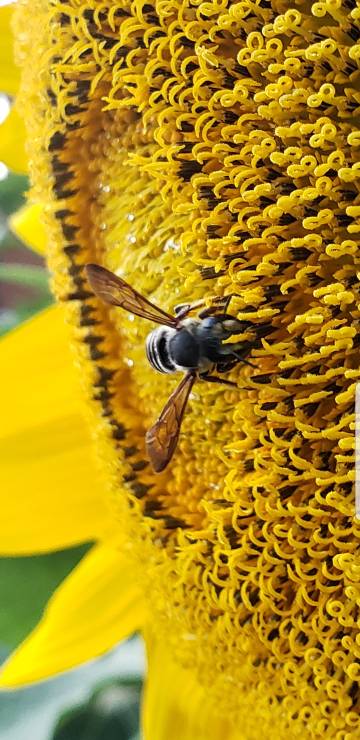MarkDarvin
Well-Known Member
Let’s put a placeholder up for now. Ever seen plumbers crack on a bumble bee working a chicory flower?

Sent from my iPhone using Tapatalk

Sent from my iPhone using Tapatalk


Years and years ago, Dr. Craig Harper wrote about a mix of cereal grains and heavily reseeding legumes that could simply be mowed once a year to create a perennial plot. At the time, I believe he was trying to simplify and lower the cost of the foodplotting process for those who have very limited time to manage their property. His solution was best in Southern locations, but versions of it were proven to work Up North. In the absence of chemical means to set back undesirable plants, we are left with biological and mechanical means, like timely discing and buckwheat. The problem with either of those is that they are profoundly time-sensitive and must be followed up with other targeted, time-sensitive efforts. To be successful at fooplotting without using any chemicals, and with very limited time to spend on the process, is a very tall order.
How much are you willing to compromise on the results?
Sent from my SM-G930V using Tapatalk
Regenerative Plotting!
Thanks, Mark, for starting this thread. I'm going to dedicate a field specifically to this thread, with pictures coming.
I think the objectives for this thread should be on how to grow deer plots without spraying, and without excessive tillage, especially keeping in mind that many plotters don't have expensive equipment like a no-till drill or a crop roller. However, experiments using equipment like a no-till drill or a crop roller to attain the objective is ok, since the objective is to not use herbicides to maintain a plot, and only using minimal tillage.
Starting clover with oats in early spring after fall corn has worked for me in starting a notill, nospray foodplot. but after the oats expired the weeds started to invade. Untouched i'd say in less than 3 years the grasses that started the first year would have taken over to the point that there wouldn't be any clover left worth speaking of, and the majority of what's left being cattails. So my challenge is to have the clover continue to regenerate and stay ahead of the grasses without spraying, tilling, or replanting.
For my experiment that I'm starting, broadleaf weeds are ok, but grasses are my enemy for regenerative plotting. I'm focusing on a combination of clover and cereal grains to try to do this. I'm going to take a beautiful three year old, 2 acre, well established weed free RegalGraze ladino clover plot named "Big Field Lower" as my dedicated test plot to go herbicide free. Any input or ideas will be appreciated.
My first idea is to mow the clover right after Labor day here and notill rye into it? The rye should suppress the grasses, and if done on an annual basis, hopefully the clover can survive without any herbicides.
The grazers hold many of the keys to this. When some dude with zero intervention budget and 12" of annual rain a year gives a lecture on sustainability, I listen.Great chart Mark! You're starting to sound like a regenerative grazing guy. You sure you're not growing cattle instead of deer? Grazing pressure and hoofs can replace gly and discs...
Sent from my SM-N960U using Tapatalk
With all due respect, that graph is disingenuous and fanciful, although pretty funny at the same time.
We are asked to not equate what we're doing, as habitat managers, with what farmers do to create a "clean" harvest crop. The very first food plot I ever put in has had glyphosate sprayed on it twice, in 9 years. There are no chemical resistant weeds being created there. The assertion that weeds would somehow become "100% unkillable" and that spraying gly somehow eventually leads to dead soil...is absurd.
If we're not going to have a reasonable discussion here, meaning it's all going to be pie-in-the-sky stuff, then I'm out.
